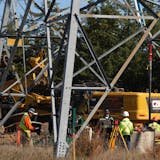Gary DeAustin got hooked on muzzleloaders the first time he fired one of the old-time rifles more than three decades ago. So did Jim Townsend.
"I haven't fired a modern one since," said Townsend, referring to firearms that use technology developed in, say, the past 150 years or so.
DeAustin and Townsend are part of a niche of hunters and shooters who have embraced this older form of weaponry, one that's loaded from the end of a barrel. After black powder is measured and poured down the barrel, a projectile is added and tapped into place with a ramrod. Then, when the muzzleloader is fired, there's a big blast of smoke.
A 67-year-old Chanhassen resident, DeAustin started out with a replica of a traditional flintlock muzzleloader — a pre-Civil War design — in the late 1970s, and he still shoots it.
But he also uses a newer in-line version with innovations that he said lessen the likelihood of misfires at critical moments. An avid elk and deer hunter, he said that's especially important when he's in the field each fall.
Townsend, 60, also shot his first muzzleloader more than 30 years ago. He gave up hunting a decade ago, but still enjoys shooting his traditional rifles regularly and participating in outings where cohorts dress in 18th- or 19th-century clothing, sleep in canvas tents, cook over wood fires, and hold shooting contests with the long, graceful guns.
Old-fashioned appeal
While these two muzzleloader owners are in somewhat different camps, each is drawn to the sport for similar reasons.


